Since the mass coral bleaching events of 2016 and 2017 on the Great Barrier Reef, there’s been a certain urgency in the way we need to respond to ecosystems under threat. We know bleaching events are triggered by elevated water temperatures due to climate change, which we must tackle on a global level, but thinking locally, there is something we can do to buy time and support the natural recovery processes of the reef.
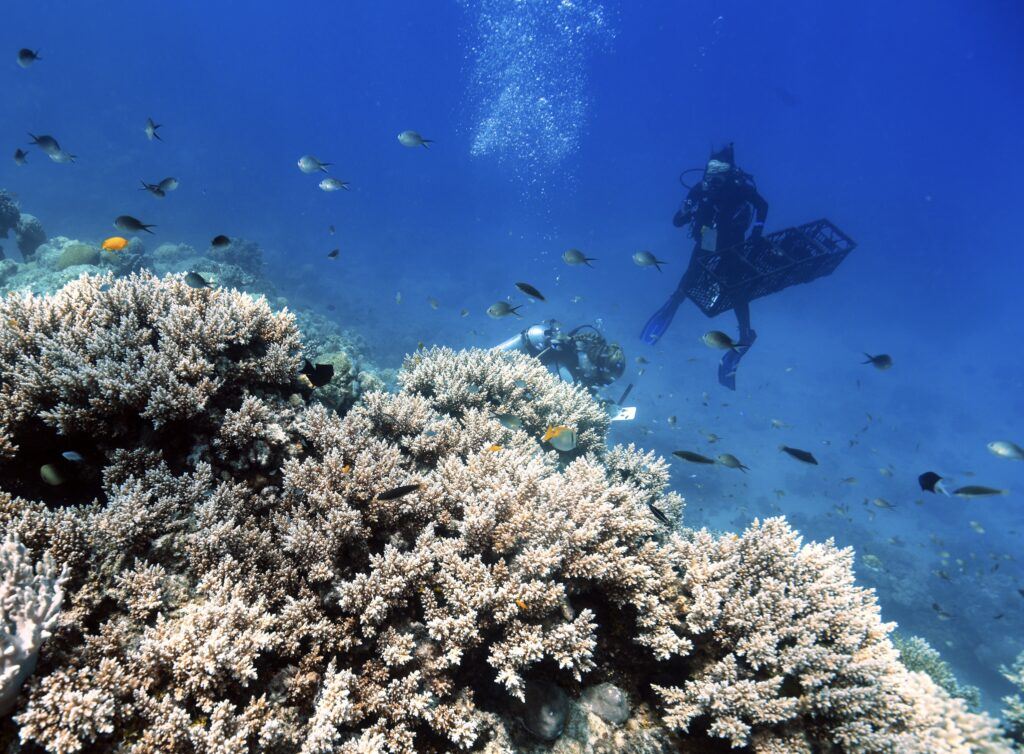
Reef restoration or ‘coral gardening’ has been practiced abroad for decades in areas where reefs have been damaged or completely destroyed by cyclones, dynamite fishing, or bleaching events, but when the Reef Restoration Foundation (RRF) was established in 2016, it wasn’t even a permitted activity in the Great Barrier Reef Marine Park. After persistent advocacy, policy was changed and the RRF was issued the first permit to begin restoring the Great Barrier Reef. We chose to replicate a model used successfully in the Florida Keys and installed our first six coral trees at Fitzroy Island in December 2017.
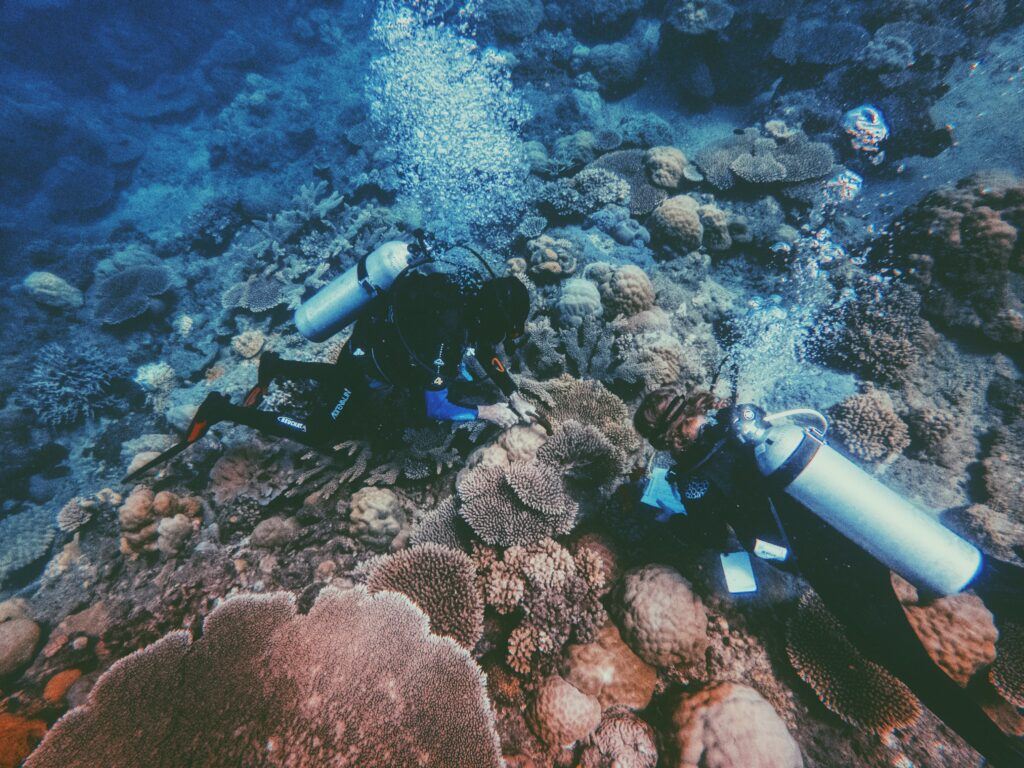
In 2019, WCN offered generous financial support to our cause, which resulted in the deployment of their own coral trees. This year, WCN began a specific sponsorship of the RRF Science Program, which guides our decision-making process. Two marine biologists in our small team operate the program in collaboration with James Cook University, and with this sponsorship, WCN is helping us continually improve and increase the influence of our work.
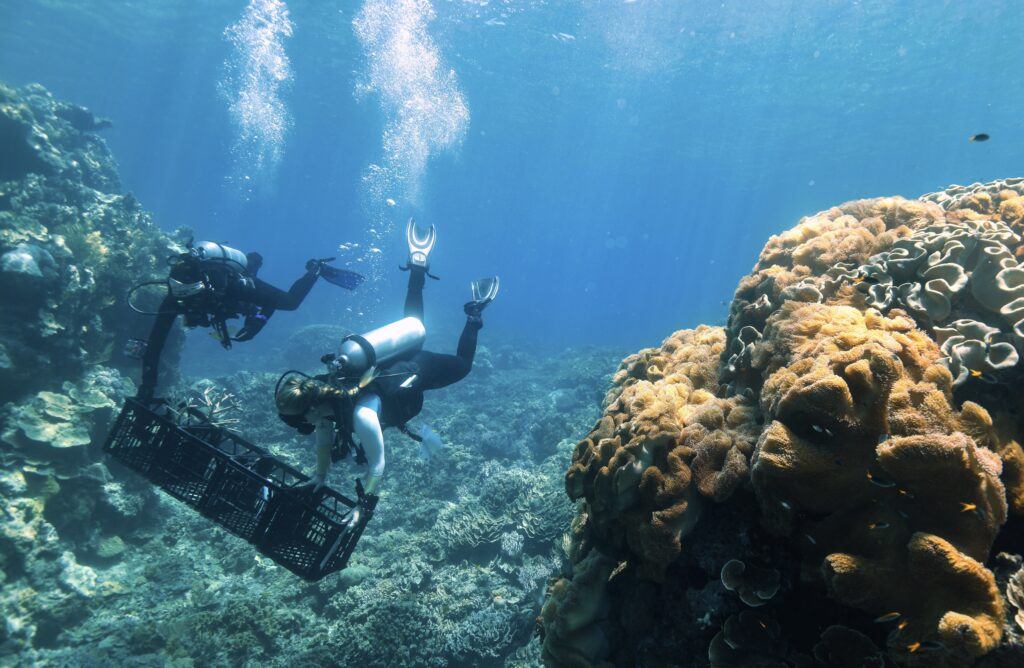
We now have 40 coral trees at multiple sites, including the outer reef, with another site to be added before the end of the year. We are also seeking adjustments to our permits to allow complementary outplanting methods so that our work can cover a greater variety of reef substrates. This new method will greatly increase our output and have a larger ecological impact.
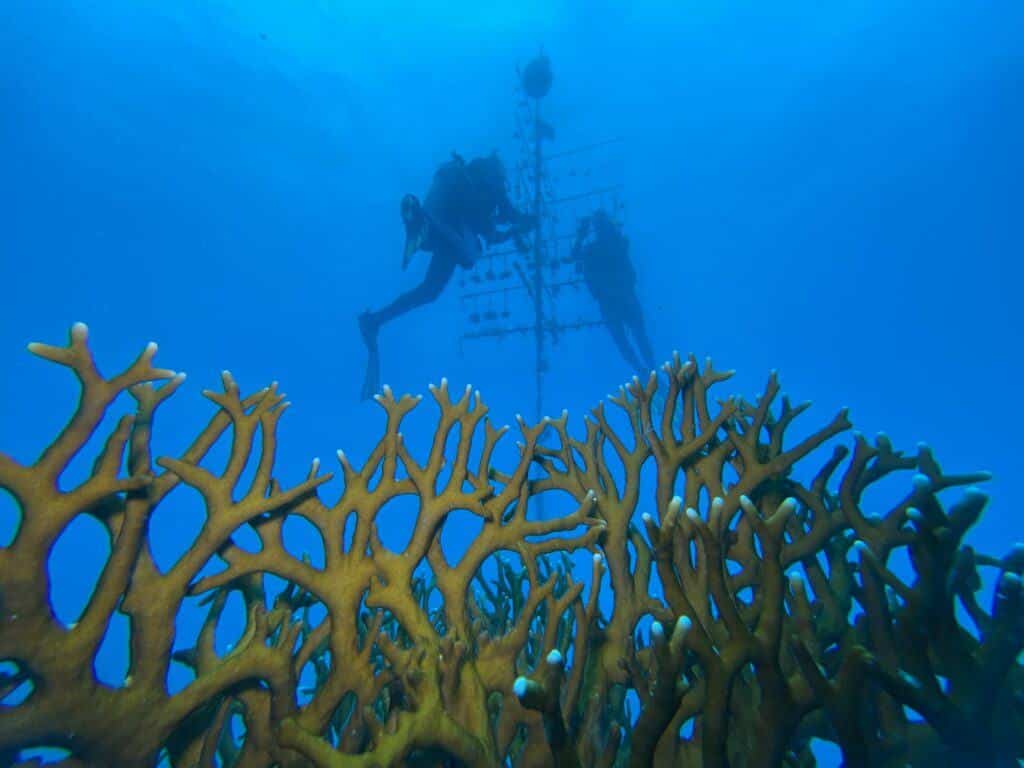
The RRF recently established an Operational Headquarters on Fitzroy Island and purchased a 5-meter aluminum boat. We fitted this boat with solar panels, a prototype waterproof battery, and an electric motor to make it a totally emissions-free way of accessing our nurseries. This makes life so much easier for our dive teams and cuts down on time spent traveling to and from the nurseries so we can spend more time cleaning the corals, monitoring their growth, and doing surveys.
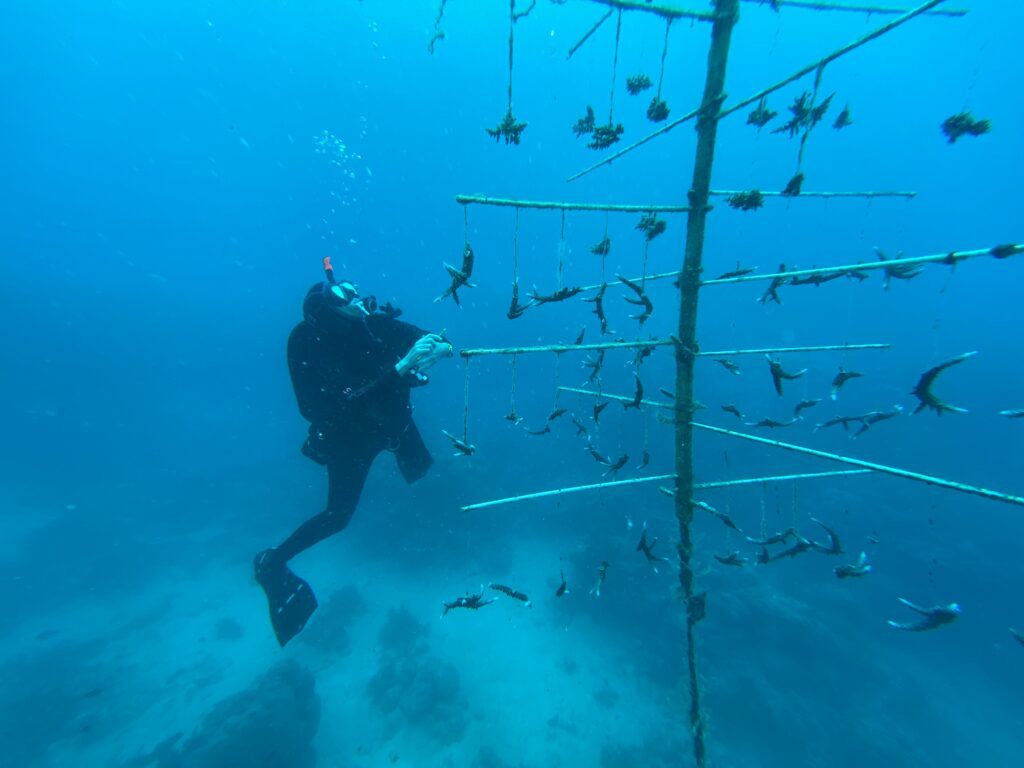
We are growing corals substantially faster in our nurseries than they naturally grow on the reef, which inspires people to get involved and contribute to our project. It’s not an alternative to action on climate change, but it offers something tangible that each of us can do. This community-based model is attractive to partners, volunteers, sponsors, and donors. There is no government funding, just people coming together to make something positive happen.
Our goal is to ensure future generations can enjoy the reef and benefit from the crucial environmental services and cultural value that it provides. The outlook for the Great Barrier Reef does not have to be bleak, and our program demonstrates the collective power of people uniting to make change. This has been a year of immense growth for the RRF, and we are proud to have the support of our community and incredible sponsors like WCN, without whom our work could not be achieved on such a scale. We are well positioned to make a bigger impact than ever before thanks to those who believe in our mission, and we are proudly committed to regenerating the Great Barrier Reef, one coral at a time.
Support Australia’s Coral Reefs
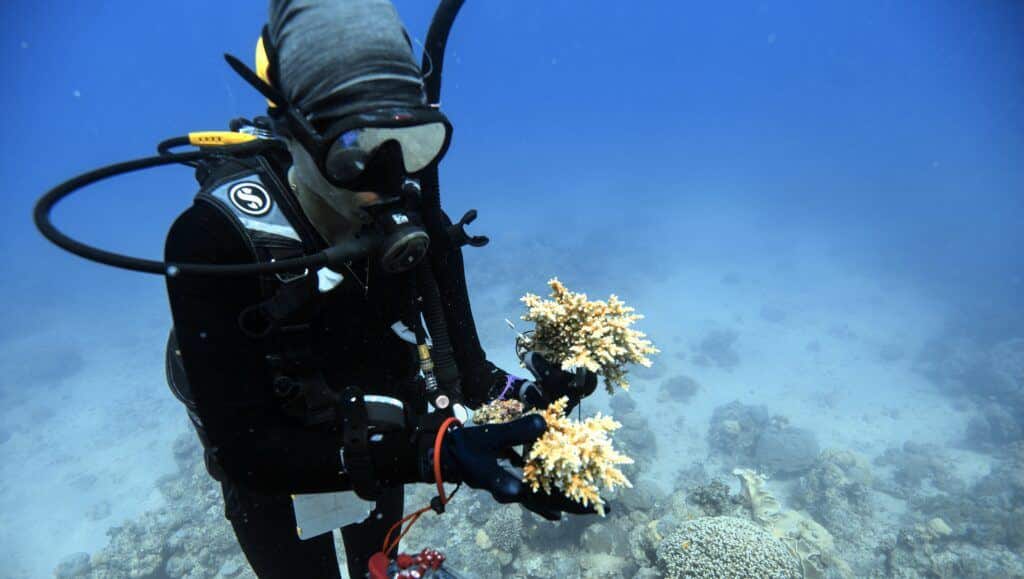
4 Comments